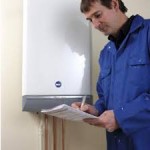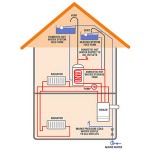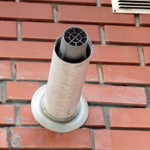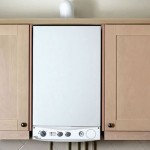Gas Boiler Flue Regulations: Things to Know before Installation Starts
What’s a boiler flue? This is a special pipe that takes away the fumes and provides the needed amount of fresh air to the boiler. Before installing a heating unit, a user should be well-acquainted with the gas boiler flue regulations. What for?
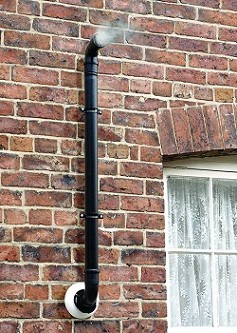
Those flues that are allowed to deteriorate or fitted in a wrong way usually start leaking and release very poisonous carbon monoxide into the surroundings. This is why it is of top importance to have the flue installed by a trained professional (a registered engineer), who knows everything about current safety and health regulations.
Structure of the Flue
Usually a typical gas boiler flue looks like a 4-inch metal pipe that goes from the boiler’s top. Today there are two concentric pipes:
- for fumes out
- for air in
Sometimes it is a 5-inch pipe. The size normally depends on a manufacturer. A 5-inch type is common to the boilers from such manufacturers as:
- Vaillant
- Worcester
- Potterton
- Ideal
- GlowWorm
- Biasi
- Baxi
- Ariston
- Vokera
However, there is another type of boilers, which have not one, but two plastic pipes that are 2 or more inches in diameter.
Basic Regulations to Follow
- If you are using a high efficiency boiler model, make sure that the flues should have more plumbing to them than in case with older boilers.
- Never place the flue outlet under the windows, opposite property walls, near doors and close to the neighbor’s boundaries.
- According to the latest gas boiler flue regulations, the pipe should be continuous and have all the joints assembled safely and correctly.
- Keep in mind that gases expelled from traditional units differ from those expelled from high efficiency ones. So, the flue type differs as well. Most modern models feature two pipes. One is fitted inside the other. One of these flues disperses the gases, while another one draws in the fresh air from the atmosphere, thus aiding the combustion process.
- The flue system, as well as the access to it, is of high importance, and that is why it should be inspected by a professional engineer. There must be an inspection hatch fitted to the place, where the flue is fitted into the property’s ceiling/walls. Only then the pipe will adhere to the regulations.
- When the gas boiler is installed in a high position, it becomes really helpful in removing the condensate that usually builds up. The liquid (a leftover, which is produced, when an exchanger reuses waste heat) is connected to a water pipe in a kitchen, bathroom or utility room. To drain away it uses gravity. So, it is important to look for heating and plumbing supplies before starting the installation process. Make sure you know what parts should be installed and what gas boiler regulations you must keep to.
Gas boiler flue regulations tend to change from time to time. Source the latest information just before the installation and take advice from professional engineers, who can suggest how to make the process easier and more available.
- popular
- new


